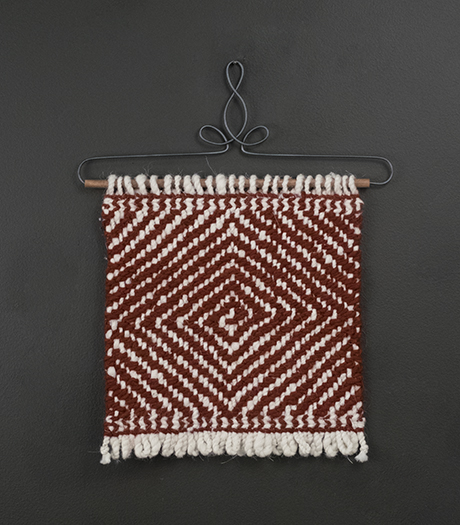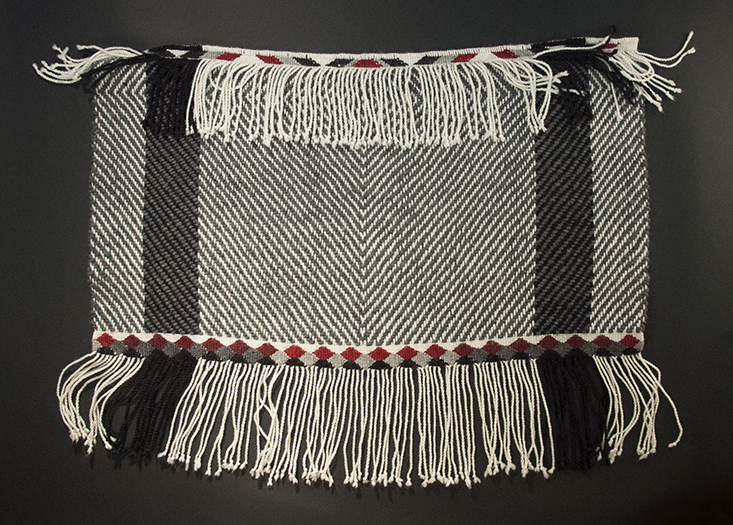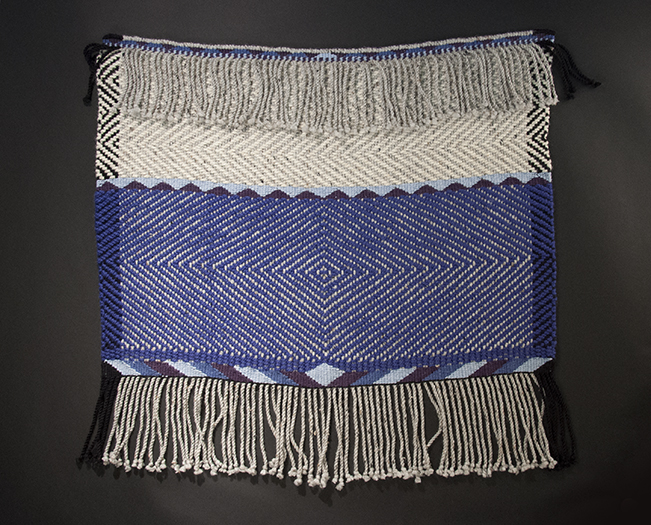October
In October we present an exhibition of new Coast Salish-style weavings by one of the contemporary masters of the art, Dr. Susan Pavel (sa’hLamitSa). Coast Salish weaving is a specific genre and technique unto itself. The art was retained by a few master weavers, including the late subiyay Bruce Miller, a Skokomish spiritual leader, who chose Pavel as an apprentice in the mid-1990s. Pavel, who is not Native, was chosen to carry on the technique by Miller, and has herself now taught over 500 students.
Susan Pavel says, “We started as just two. Now, there are hundreds. My students have taught other students. Now I know that this will not die with me when I go. The journey has been and continues to be remarkable. The essence of weaving is fulfilled because … I am obedient to the call.”
In summer 2016 she will have a major retrospective exhibition at the Suquamish Museum of her weavings–both new and from her archive. The new works will be available in her exhibition at Stonington Gallery in October.
Exhibition Dates:
October 6, 2016 - October 30, 2016Involved Artists:
Dr. Susan Pavel
Featured Works
-
 Susan PavelThe EyeHand-Dyed Mountain Goat Wool
Susan PavelThe EyeHand-Dyed Mountain Goat Wool- 16"h
- 11"w
SOLD -
 Susan PavelGray DanceAcrylic Wool Blend, 100% Wool
Susan PavelGray DanceAcrylic Wool Blend, 100% Wool- 32"h
- 42"w
SOLD -
 Susan PavelFor the Love of BlueAcrylic Wool Blend
Susan PavelFor the Love of BlueAcrylic Wool Blend- 39"h
- 36"w
SOLD -
 Susan PavelAncestor’s EchoAcrylic Wool Blend
Susan PavelAncestor’s EchoAcrylic Wool Blend- 38"h
- 76"w
SOLD
One of Susan Pavel’s greatest achievements was the task of making the first new mountain goat hair blanket that has been woven in 100 years.
“One of the great acts of survival is to adapt Salish weaving that had waned for quite a period of time,” said Michael Pavel, Pavel’s husband and subiyay Bruce Miller’s nephew. Michael spent 12 years gathering the wool for the blanket, tuft by tuft. It took Pavel about six months to weave it. The blanket entered the Seattle Art Museum’s permanent collection in 2007. There was much fanfare, including the presentation of the blanket to Lummi elder and weaver Fran James (shown below).
“The blanket is a triumph of an ongoing quiet renaissance in Coast Salish weaving carried on by Indian and non-Indian weavers from Vancouver Island to Puget Sound and the Washington coast,” wrote the Seattle Times in 2007.

Traditionally, Salish blankets/clothing are woven using a variety of animal and plant fibers including mountain goat wool, canine hair, hemp, fireweed, milkweed, cattail, cotton grass, and yellow and red cedar bark. Various plants were used to create the colors used in dying the wool. Bark from Oregon grape, stinging nettles, various lichens, and alder bark were some of these plants.
 There are three types of techniques used in Coast Salish weaving: twill, twining, and plain. The diagonals are created by the twill weave, where the weft travels under and over the warp. Twining uses two weft yarns twisting around the warp. The plain weave is a simple over and under warp and weft.
There are three types of techniques used in Coast Salish weaving: twill, twining, and plain. The diagonals are created by the twill weave, where the weft travels under and over the warp. Twining uses two weft yarns twisting around the warp. The plain weave is a simple over and under warp and weft.
Amongst Coast Salish people, blankets made from mountain goat wool are a symbol of wealth and status. During ceremonial occasions objects of wealth are given as gifts, thus leaving the donor in a place of honor and prestige. Woven blankets are distributed during weddings, memorials, naming ceremonies, and as payment to shamans for their services.
